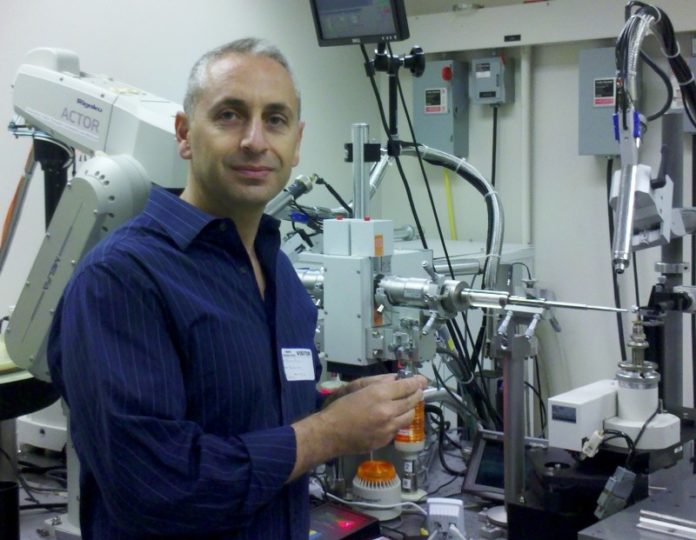
If you’re not making regular trips to the vet for your kitty these days, you may not know that cats can get AIDS too. The feline virus FIV that causes the disease in cats looks a lot like HIV, a fact that Technion scientists say could inspire new anti-HIV drugs.
How can a cat help the fight against AIDS? Both FIV and HIV rely on a protein called integrase that inserts the virus’ DNA into an infected cell’s DNA. Now, Assistant Professor Akram Alian and graduate student Meytal Galilee of the Technion-Israel Institute of Technology may have found a new weak point in the protein that drug designers may be able to target in the future.
In an article published online in Cell Structure, the two researchers from the Faculty of Biology offer up a detailed, 3-D molecular map of FIV integrase that could help scientists also understand how this protein works in HIV.
For instance, the researchers have pinpointed a single amino acid change that seems to be critical in highlighting how the protein assembles itself from simpler building blocks. Anti-HIV drug designers are eager to find ways to derail this assembly process.
“Designing drugs which target such specific hot spots,” Alian explained, ” may be easier than targeting the entire protein-protein interacting interface.”
Scientists have been able to determine the 3-D structure of the complicated molecular core of HIV integrase. But in FIV, Alian and Galilee were able to solve the structure in a more simple form. The researchers determined that a mutation in a single amino acid can convert the integrase from the more complex to the simpler form in FIV.
In fact, that single amino acid may act as a crucial “hinge” point that connects two molecular subunits and allows them to pivot about in the protein’s fully active core.
“Highlighting the hinge…is an important observation that should be considered in the future design of integrase drugs,” Alian said.
Their close examination of the crystal structure of the FIV integrase core also revealed that the “backbone” of the simple and complex forms are nearly identical. This may make it easier for scientists to study the simpler form in the laboratory and know that some of their findings will apply to the more complex HIV integrasecore as well.
In their next studies, Galilee and Alian hope to focus on how the FIV virus might evolve over time, to keep replicating in the face of a mutation like the one that produced the simple integrase core. “This will help us predict how emergent resistant viral variants may evolve to escape or become resistant to future drugs,” Alian said.
Story Source:
The above story is based on materials provided by American Technion Society. The original article was written by Kevin Hattori. Note: Materials may be edited for content and length.
Journal Reference:
- Meytal Galilee, Akram Alian. Identification of Phe187 as a Crucial Dimerization Determinant Facilitates Crystallization of a Monomeric Retroviral Integrase Core Domain. Structure, 2014; DOI: 10.1016/j.str.2014.08.001
